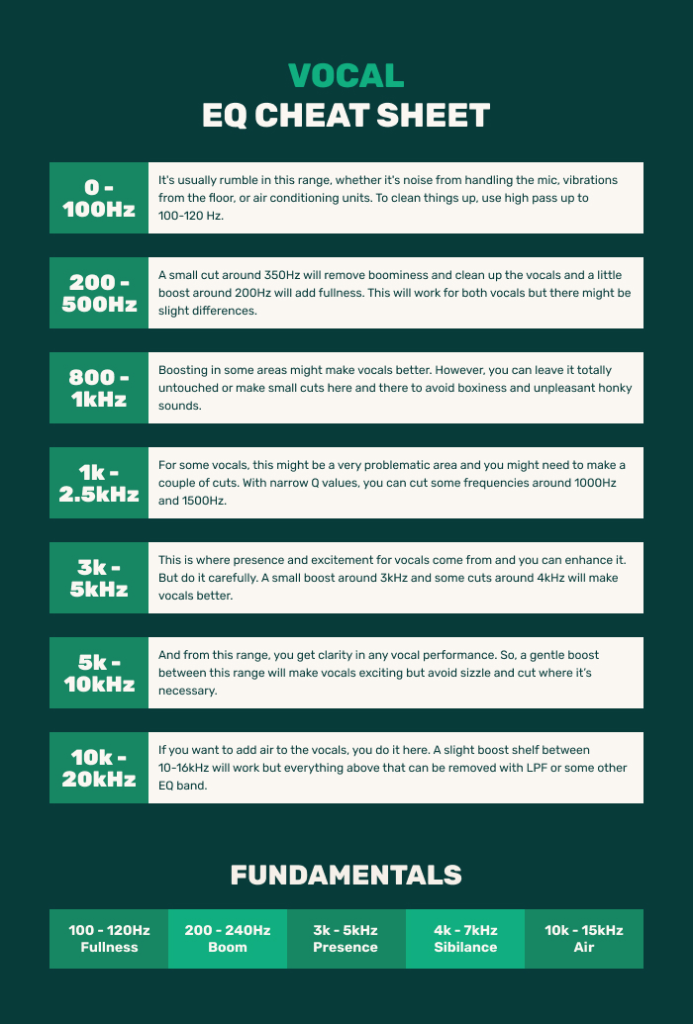A great way to mix vocals properly and faster is to have some kind of vocal EQ cheat sheet.
It helps you to understand the general frequency range of vocals and which frequencies are good and which ones are bad.
Of course, every vocal take and every singer has a unique sound and requires a different approach, but there are some general rules to vocal mixing.
And this vocal EQ cheat sheet will help you to understand vocal frequencies and mix vocals properly, especially if you are a beginner.
Vocal Frequencies
This vocal mixing cheat sheet works for both – male and female vocals – and gives you the range of frequencies you need to pay attention to.
- 0-100Hz – The range is typically filled with low-frequency disturbances, such as handling noise, floor vibrations, and air conditioning units. You can improve the quality by using a highpass filter to eliminate frequencies below 100-120 Hz.
- 200-500Hz – A small cut around 350Hz will remove boominess and clean up the vocals, while a little boost around 200Hz will add fullness. This will work for both vocals but there might be slight differences.
- 800-1000Hz – In order to avoid any undesirable resonance or harshness in the sound, it is also possible to leave certain frequencies unaltered or make minor adjustments.
- 1000-2500Hz – For certain vocals that present difficulties around 1500Hz, cutting frequencies with narrow Q values might be necessary. You may need to make a few adjustments to achieve the desired outcome.
- 3000-5000Hz – It’s possible to improve vocal presence and excitement here, but caution is advised. A slight increase in the frequency range of around 3kHz and some reductions in the frequency range of around 4kHz can lead to an improvement in vocals.
- 5000-10000Hz – You can achieve clarity in all vocal performances by staying within this specific range. A slight increase within this range can be added to make the vocals more exciting while avoiding excessive high-frequency sounds and reducing them where necessary.
- 10000-20000Hz – If you want to add air to the vocals, this is where you do it. A slight boost shelf between 10 and 16kHz will suffice, but anything above that can be removed using LPF or another EQ band.

Conclusion
I hope this vocal EQ cheat sheet will be helpful for you and that your vocal mixes will sound better and more professional. Use it as a general guide or a starting point and always try to implement your own, unique tricks.
